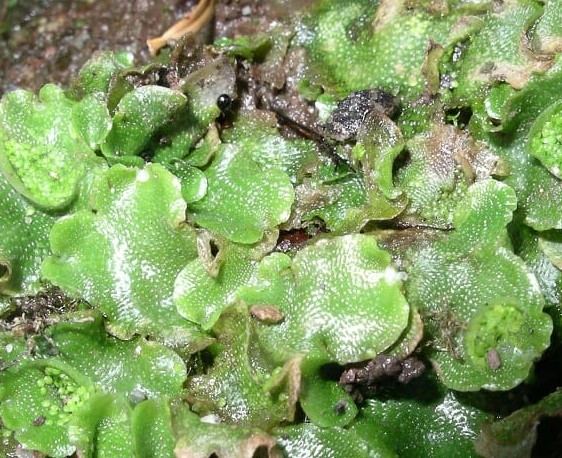Nonvascular Plant Definition
Species of plants without specialized vascular tissues are nonvascular plants. It includes everything from higher-structured forms of green algae with plant-like characteristics to mosses (Bryophyta), liverworts (Marchantiophyta), and hornworts (Anthocerotophyta). Nonvascular plants are those that live both on land and in marine environments.
Lifecycle of a Nonvascular Plant
All plants and some algae exhibit an alternation of generations life cycle. In this cycle, a gametophyte gives rise to gametes. The gametophyte is a haploid organism, containing only one set of DNA. The gametes, therefore, are produced via mitosis.
When these gametes fuse, they create a zygote, which is a new diploid organism. This zygote will grow up into the sporophyte generation.
The sporophyte generation is responsible for producing spores. To do this, a mature sporophyte will produce cells capable of undergoing meiosis, a cell division which divides the double set of DNA.
The spores, therefore, are again haploid. Spores, unlike gametes, develop directly into new organisms, the gametophyte generation. Thus, each generation alters between a haploid and diploid state.
In nonvascular plants, the sporophyte generation is usually smaller, and dependent on the gametophyte. Mosses, for example, exist almost entirely as gametophytes until the proper conditions arise, in which the sporophyte generation is created.
While the gametophytes form a large mat or bundle with cells capable of photosynthesis, the sporophyte consists of a tiny stalk upon which spores are created and released.
This is directly opposite of what vascular plants do. While a nonvascular plant shows a dominant gametophyte generation, vascular plants show a dominant sporophyte generation. While having vascular tissues does help a vascular plant distribute water, vascular plants are not necessarily more successful than a nonvascular plant.
Using other evolved techniques, a nonvascular plant can be found in areas which few vascular plants could colonize. Because nonvascular plants do not need to grow roots or have an excess of nutrients, a nonvascular plant is often a pioneer species, colonizing barren soil and providing a basis for other plants to colonize on.
Examples of a Nonvascular Plant
Moss
Moss is a nonvascular plant found worldwide. Moss is often one of the only plant types to colonize certain areas, including areas with poor soil. Moss typically grows in wet, damp areas. This is not always the case. Moss has colonized most environments, from the cold Artic to the dry desert.
There are approximately 12,000 species of moss. Some moss species are nearly microscopic, while others can grow over a foot tall. Mosses, being a nonvascular plant, are mostly limited in height beyond this. Peat is a type of fuel created from the dense sheets of Sphagnum moss which grows in peat bogs.
Liverwort
Where moss grows in small branching structures, and many organisms get packed in a larger mat or bundle, liverwort grows as small, individual leaf-like structure. The thallus, as it is called, is the dominant gametophyte. The thallus will produce specialized organs, to house the sporophyte.
Liverwort and hornwort are almost indistinguishable, besides some differences in their thallus and the structure of their sporophytes. However, genetic evidence has revealed that liverwort and hornwort, while both a nonvascular plant group, are unrelated enough to deserve two separate divisions.
Hornwort
Commonly mistaken as liverwort, hornwort is a closely related group of nonvascular plant species. Like mosses and liverworts, hornworts exist as a dominant gametophyte form. Hornworts, because of the way that they combine their chloroplasts with other organelles, are thought to be more closely related to certain species of algae than other land plants.
While hornwort, liverwort, and mosses used to all belong to the Bryophyta, the hornworts and liverworts have been given their own divisions. This reflects the finding that the groups are not closely related enough to be considered the same group. In the picture below you can see a hornwort. Note that while it looks like liverwort, you can easily see the horn-like structures. These structures house the sporophyte generation, creating spores.
Algae
Not all algae is considered a nonvascular plant. Typically, only those algae found in the clade Viridiplantae are considered nonvascular plants. However, the evolutionary relationships between algae and land plants are not entirely clear. It is sometimes assumed that nonvascular algae led to nonvascular land plants, which led to vascular land plants.
This theory, however, is not necessarily supported by the genetic and paleological evidence. However, some algae do have specific tissues, some of which are even specialized for water transport. An alternate theory supposes that some algae developed into vascular plants, where other algae became the modern nonvascular plant.
FAQ’s
Nonvascular plants, also known as bryophytes, are a group of plants that lack a specialized system of vessels for transporting water and nutrients. This includes mosses, liverworts, and hornworts. Instead of roots, nonvascular plants have simple structures called rhizoids that anchor the plant to a surface and absorb water and nutrients.
Nonvascular plants can be found in a wide range of environments, including moist soils, damp rocks, and shaded areas. They are often found in habitats where there is little competition from other plant species, such as in bogs, swamps, and along streams and rivers.
Nonvascular plants have several unique features that set them apart from other types of plants. For example, they reproduce using spores rather than seeds, and they lack true leaves, stems, and roots. Nonvascular plants also play an important role in many ecosystems by providing habitat and food for a variety of organisms.
Nonvascular plants play an important role in many ecosystems. They help to prevent erosion by holding soil in place with their rhizoids, and they contribute to nutrient cycling by breaking down organic matter. Nonvascular plants also provide habitat and food for a variety of animals, including insects and small mammals. Additionally, some species of nonvascular plants are used for medicinal purposes, such as in traditional Chinese and Ayurvedic medicine.

